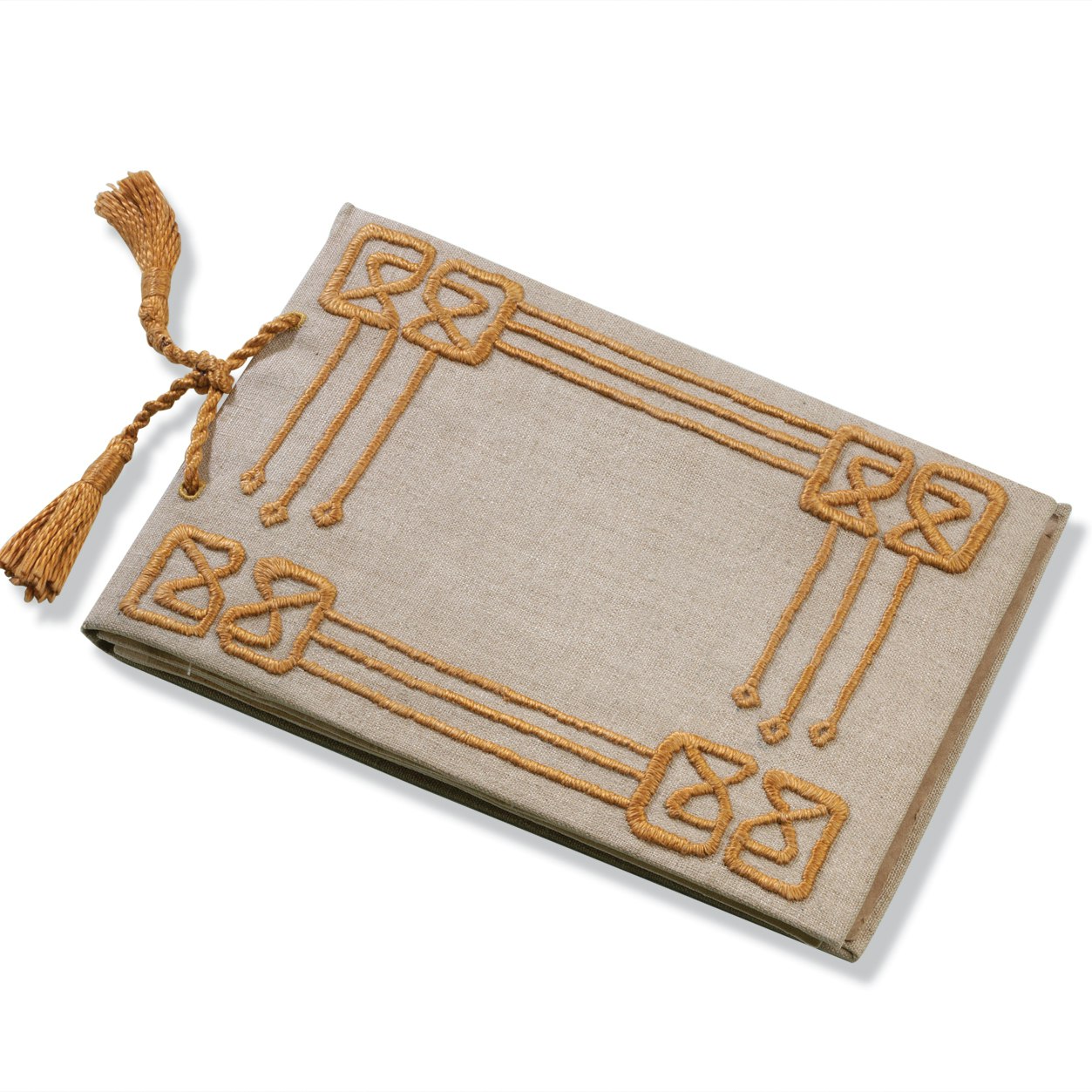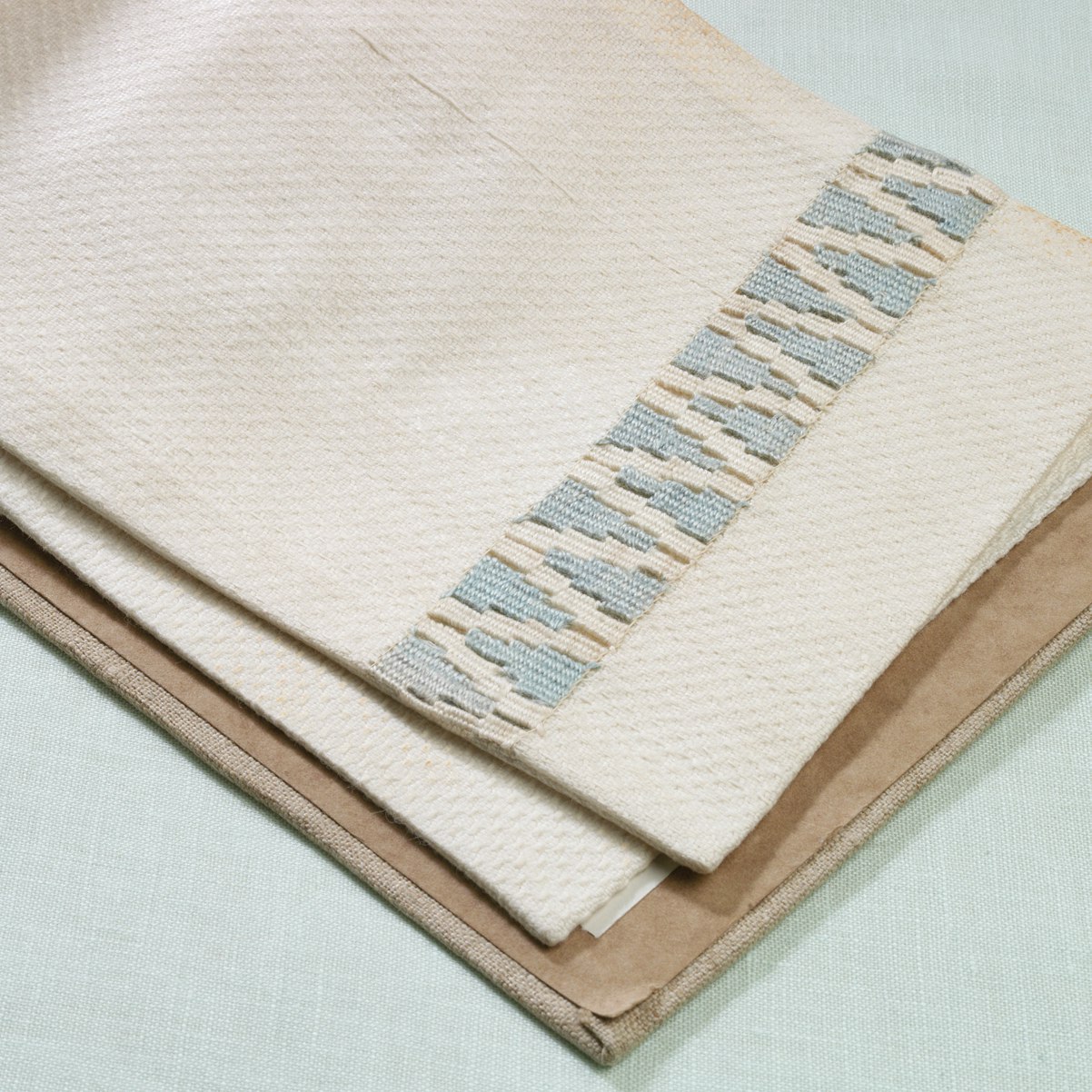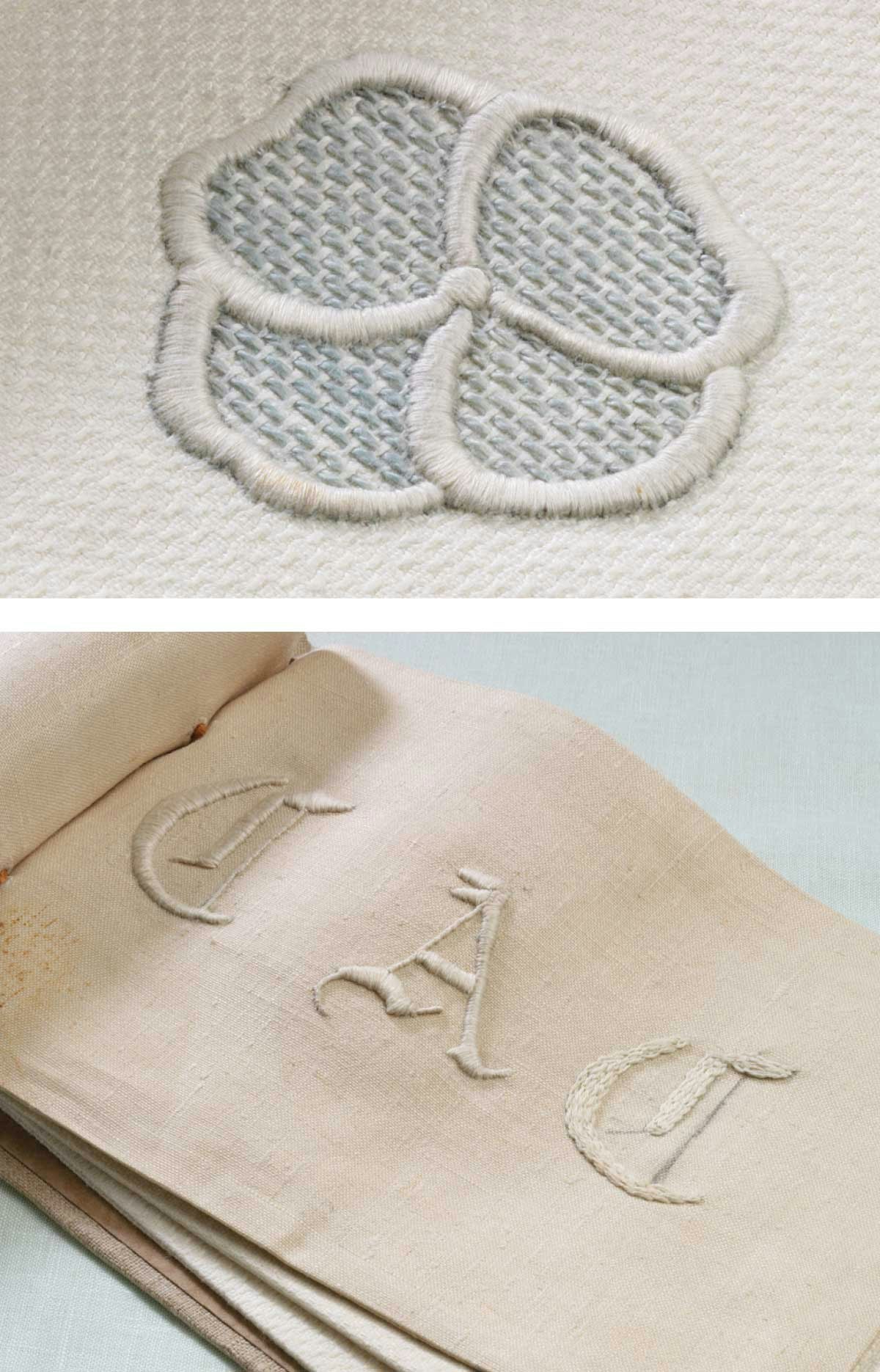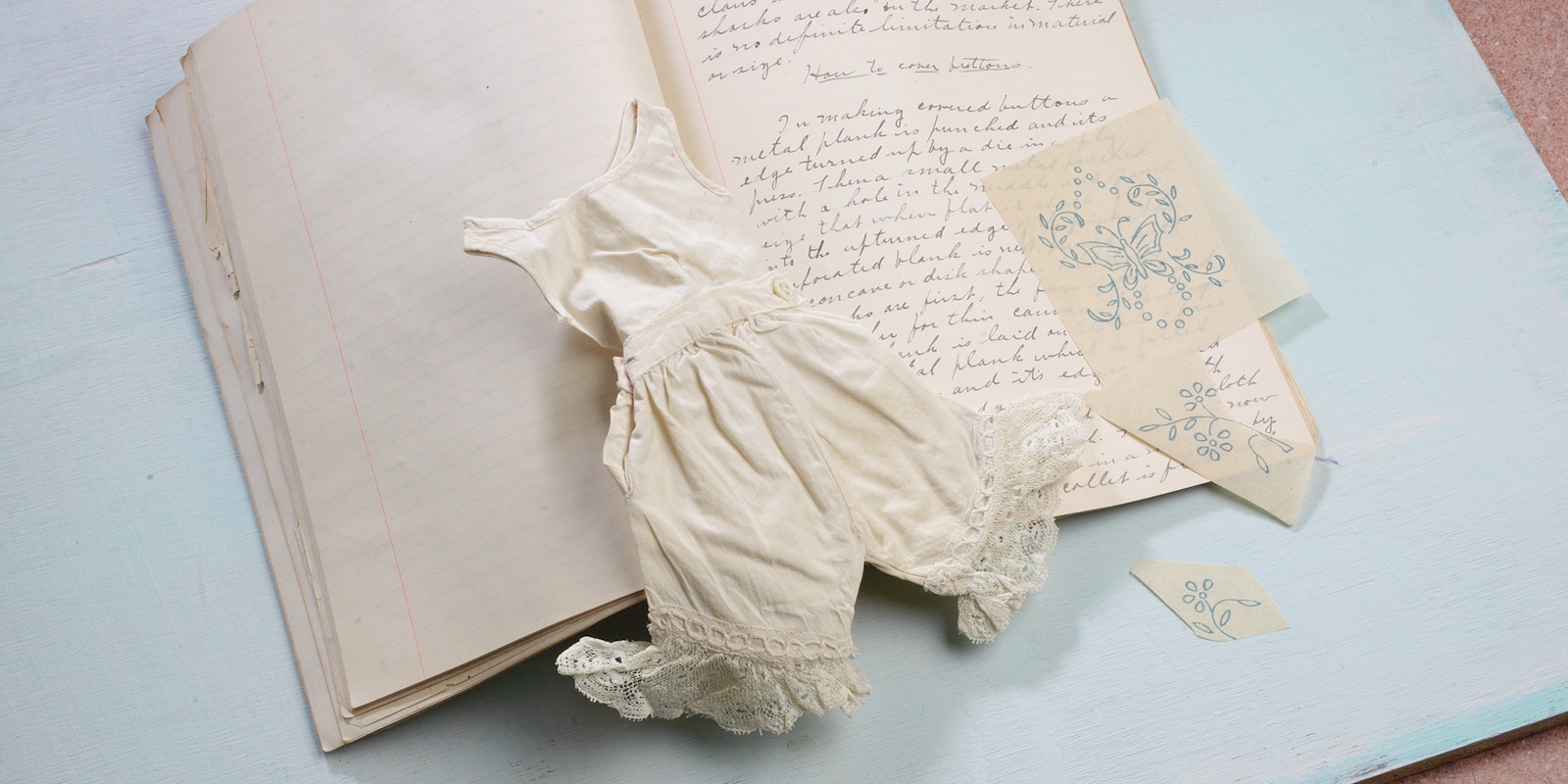Among the 12,000 objects in the collection of the Avenir Museum of Design and Merchandising at Colorado State University (CSU) in Fort Collins, Colorado, are the two needlework sample books shown here. Inscribed in ink on the first page of the coverless sewing sample book, which museum accession records date to 1904–1908, is the name Elna Pughe. The linen-covered embroidery book is inscribed, “Property of Domestic Art Dept./Made by Junior Class/Spring Term – 1913.” (The Domestic Art building, now Guggenheim Hall, was constructed in 1910, when CSU was still known as Colorado Agricultural College.)

The embroidery sample book made by members of Colorado State University’s Domestic Art Department junior class during the spring term of 1913. The book’s cover is linen over heavy cardstock; the front cover is embroidered in satin stitch, and the book is bound with a tasseled cord made from the same thread as that used in the embroidery. (67-4-1).
Dorothy Pughe Klingler, the donor of Elna Pughe’s book, noted that Elna compiled it while a student at “Colorado College, Fort Collins, Colorado.” (Presumably she was referring to Colorado Agricultural College; Colorado College, a different institution, is located in Colorado Springs.) All of the entries are handwritten on three-hole loose-leaf paper, the pages of which are bound together by a brown shoestring. Contained in the book are information on general sewing rules; codes of conduct (keeping lockers in perfect order and “Each student is requested to wear a white apron,” for example); primitive methods of weaving; how textiles are manufactured, descriptions of various fabrics, dyeing, tape measures, pins, scissors, needles, thimbles, weaving, bed and table linens, and lace; and how to conduct fiber tests (by fire and acid, for wool, for example). Several loose stamped embroidery patterns lie between two of the pages. Also included between other pairs of pages are samples of needlework showing overseaming, narrow and rolled hems, rolled hem with lace, French seams, flat felling, tucking, gathering, shirring, stocking darning and glove mending, matching stripes, and the miniature camisole and lace-edged bloomers shown in the photograph.

The embroidery sample book made by members of Colorado State University’s Domestic Art Department junior class during the spring term of 1913, showing one of the cotton piqué pages.
Six of the pages of the embroidery sample book are made of linen; the other two pages are of cotton piqué. Each page is backed with fabric so that the backs of the stitches are hidden. Examples include chain, herringbone, buttonhole eyelet, feather, satin, and lattice stitches; stumpwork; French knots; monograms; hemstitching; and drawn-thread work.

The embroidery sample book made by members of Colorado State University’s Domestic Art Department junior class during the spring term of 1913, showing the page with an embroidered flower (top) and the page with monograms (bottom).
In the early decades of the twentieth century, most women were expected to be able to run and maintain a household. Their education, including college-level studies, focused on providing them with the skills necessary to do so. These two sample books provide a glimpse into some of the skills they were expected to acquire.
Interested in learning more about samplers? This article and others can be found in the July/August 2010 issue of PieceWork.
Also, remember that if you are an active subscriber to PieceWork magazine, you have unlimited access to previous issues, including July/August 2010. See our help center for the step-by-step process on how to access them.
Resources
Avenir Museum of Design and Merchandising, chhs.colostate.edu/avenir.
Originally published September 28, 2020; updated July 31, 2024.

